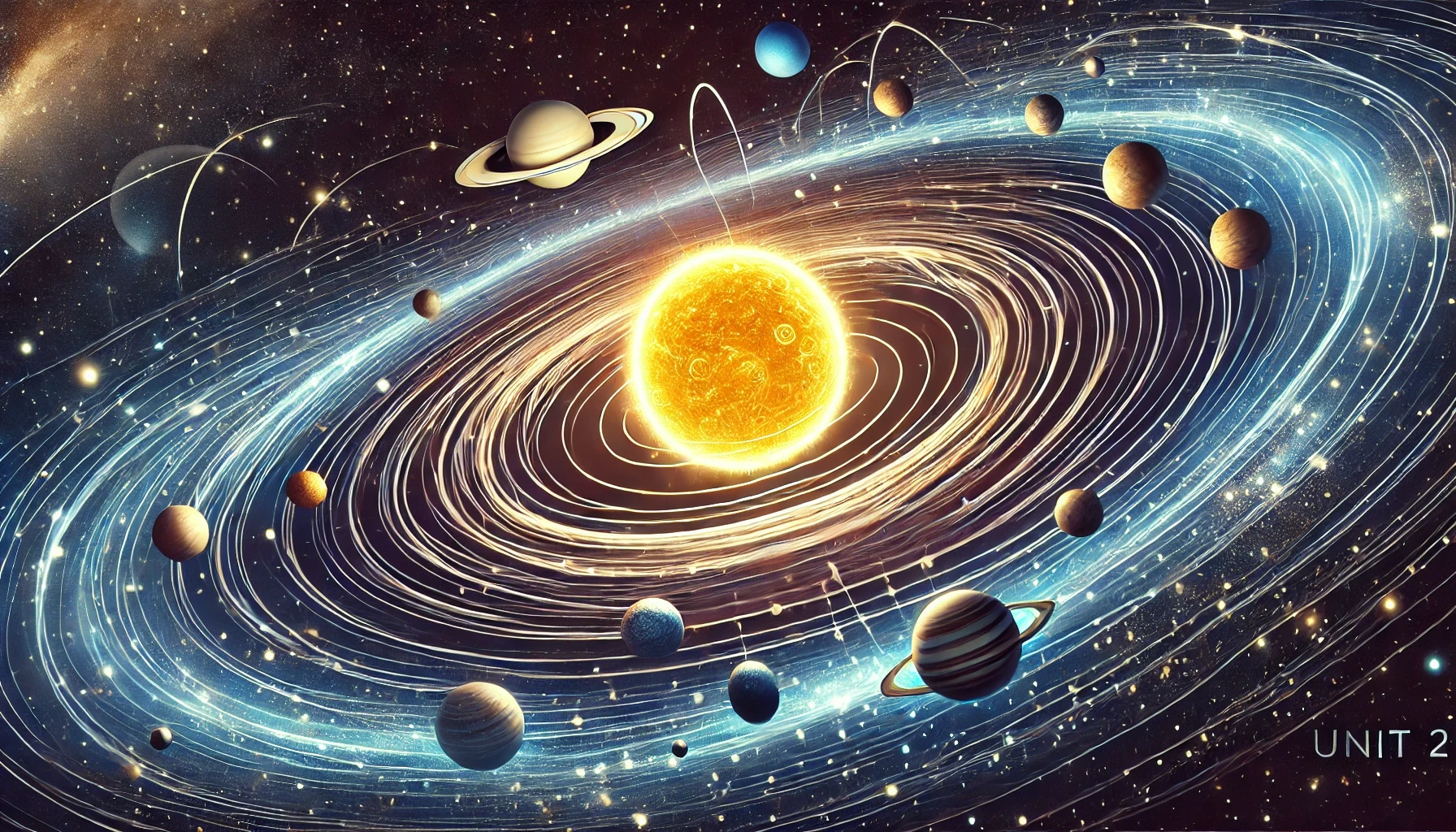This unit delves into the laws governing the motion of celestial bodies, including planets, moons, and satellites. It covers gravitational forces and orbital mechanics, providing a comprehensive understanding of the principles that dictate the movement and interaction of objects in space.

Teacher Assessment
- Summary Notes
- Assignment/Project
Self-Assessment
- Each section of this unit includes a set of “Check Your Understanding” questions that are designed to prepare you for the midterm exam.
Summary Notes
- While going through the lessons, working on the Check Your Understanding problems, and completing any assignment/project, you are expected to take meaningful notes for your future self. These notes can include concepts, diagrams, examples, etc.
- You will be allowed to access to these notes during the test!
- Print out the summary notes file and fill it with useful, hand-written notes while working through this unit and submit your notes at the end of the unit to be assessed for completion.
- There is a suggested set of topics as well as empty boxes to give you the opportunity to summarize additional topics.
2.1 Kepler’s Laws of Planetary Motion
- Law of Orbits: All planets move in elliptical orbits, with the Sun at one focus.
- Law of Areas: A line that connects a planet to the Sun sweeps out equal areas during equal intervals of time.
- Law of Periods: The square of the period of any planet is proportional to the cube of the semi-major axis of its orbit.
2.2 Newton’s Law of Universal Gravitation
- Definition and formula
- Gravitational constant
- Inverse square law
- Applications of gravitational theory
2.3 Circular Motion
- Definition and formula for centripetal force
- Examples of centripetal forces in daily life and astronomy
- Orbital speed and its derivation
2.4 The Structure and Components of Our Solar System I
- Formation of the Solar System
- The Sun: structure and composition
- Terrestrial planets: characteristics and notable features
- Jovian planets: characteristics and notable features
2.5 The Structure and Components of Our Solar System II
- Dwarf planets: Pluto, Eris, Ceres, Haumea, Makemake
- Asteroids and the asteroid belt: origin and significant examples
- Comets and the Kuiper Belt: structure and notable comets
- Meteoroids, meteors, and meteorites: definitions and historical impacts
- Moons of the Solar System: notable examples and formation theories
- The Oort Cloud: hypothetical cloud of icy bodies and its role in the solar system
Assignment: Investigating Galaxy Data
- Print off the attached assignment.
- Follow the steps and complete the questions.
- Submit your document with the questions answered.
Course Resources
- Free Textbook: Astronomy by OpenStax.
- AI Tutor: Astronomy Tutor to support you with this class.
Science Curricular Connections
- Physics 12: uniform circular motion, centripetal force and acceleration, changes to apparent weight, gravitational field and Newton’s law of universal gravitation, gravitational dynamics
- Physics 11: mass, force of gravity, apparent weight, Newton’s laws of motion, horizontal uniform and accelerated motion
- Earth Sciences 11: astronomy seeks to explain the origin and interactions of Earth and its solar system, impacts of the Earth-moon-sun system
Learning Standards
- I can state Kepler’s First Law and explain the concept of elliptical orbits with the Sun at one focus.
- I can describe the characteristics of an ellipse and its relevance to planetary orbits.
- I can explain Kepler’s Second Law and the concept of equal areas in equal time periods.
- I can describe the relationship between a planet’s distance from the Sun and its orbital speed according to Kepler’s Second Law.
- I can use Kepler’s Third Law to calculate the orbital period of a planet given its semi-major axis.
- I can verify the consistency of Kepler’s Third Law for different planets.
- I can use Newton’s Second Law to calculate the force acting on an object given its mass and acceleration.
- I can explain the relationship between mass, force, and acceleration according to Newton’s Second Law.
- I can calculate the gravitational force between two masses using Newton’s Law of Universal Gravitation.
- I can explain the concept of the inverse square law in the context of gravitational force.
- I can describe the importance of the gravitational constant G in Newton’s law.
- I can explain the concept of weight as the gravitational force acting on an object.
- I can describe the role of gravity in maintaining the orbits of planets and satellites.
- I can describe the formation of the solar system from the solar nebula.
- I can explain the role of gravity and circular motion in the formation of the Sun and planets.
- I can calculate the centripetal force acting on an object moving in a circular path.
- I can describe the relationship between gravitational force and centripetal force in orbital motion.
- I can calculate the centripetal acceleration of an object moving in a circular orbit.
- I can derive the formula for orbital speed and explain its significance in astronomy.
- I can calculate the orbital speed of moons and satellites using the given distance and mass of the central body.
- I can calculate the orbital period of a moon or satellite using Kepler’s Third Law.
- I can calculate the surface gravity on a moon or planet given its mass and radius.